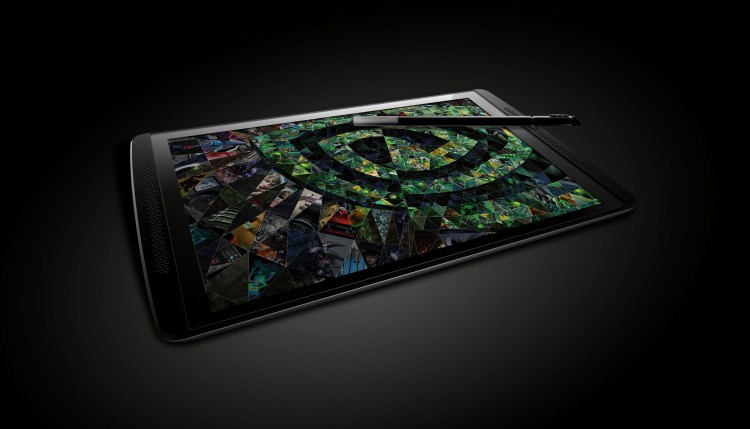Nvidia’s next hope may be even more mobile than a smartphone.
Jen-Hsun Huang, the chief executive of graphics chip maker Nvidia, said today that the company has high hopes for its Tegra series of mobile processors and automobiles, even as the core PC market for graphics remains flat or down.
He made the remarks in the Santa Clara, Calif.-based company’s analyst phone call today after reporting earnings. Nvidia reported its earnings for the third fiscal quarter ended Oct. 31 that partially missed Wall Street’s expectations. The world’s biggest standalone graphics chip maker said that its revenue was $1.054 billion and net income was $119 million, or 20 cents a share, compared with $1.204 billion and $209 million, or 33 cents a share, in the year-ago quarter.
Adjusted non-GAAP earnings per share in the third quarter was 26 cents. Nvidia said its revenue in the fourth quarter would be $1.05 billion. Analysts expected revenue in the third quarter of $1.052 billion and fourth-quarter revenue of $1.083 billion, and GAAP earnings per share of 19 cents and non-GAAP earnings per share of 26 cents. That means the fourth-quarter outlook is below what Wall Street expected.
The reaction on Wall Street is mixed. Nvidia’s stock price fell 2.4 percent to $14.55 a share before the earnings report. But it is up 1 percent to $14.70 a share in after-hours trading, even though Nvidia’s outlook isn’t that optimistic.
Nvidia said it shipped its first Tegra 4 chips during the quarter. Tegra processors generated $111.2 million in the quarter, up from $111.4 million in the prior quarter but down 54 percent from a year earlier. Huang said that the company delayed shipment of its Tegra 4 processors and sped up the development of its Tegra 4i processor with a built-in LTE modem. Nvidia also sped up development of Project Logan, a next-generation Tegra processor. That chip will ship “a lot sooner than the one year gap” that usually happens between Tegra generations.
Tegra 4 revenue is expected to grow in the fourth quarter.
Nvidia saw good sales of its Quadro and Tesla chips for engineers, servers, and supercomputers. But sales of GeForce graphics processing units (GPUs) for desktops were up slightly, and GeForce GPUs for notebooks were lower. Gaming segment sales were up 6 percent from a year ago.
Huang said that a shortfall in Tegra sales explained why the company isn’t expected to hit the earlier outlook for the fourth-fiscal quarter that ends Jan. 31, 2014. Still, Huang said he was delighted in the decision he made to delay Tegra 4 and he believes it will pay off for the company in the long run.
“Nvidia had another quarter that bucked the trend of a lagging PC market,” said Patrick Moorhead, analyst at Moor Insights & Strategy. “Kepler architecture-based solutions continue to pay dividends, and it will be interesting to see how Nvidia fairs with AMD’s resurgence in the high-end GPU market with its Hawaii-based consumer cards. Nvidia owns the top of the stack, but AMD has competitive offerings throughout all price ranges. As it relates to Tegra 4, next quarter’s performance will be driven by sell through of Microsoft’s Surface 2 and Tegra Tab. Tegra 4 is competitive, but competition is fierce.”
The Tegra 4i will likely be built into products debuting in the first fiscal quarter next year, but Huang said that AT&T has certified the Tegra 4i for use in its handsets.
Huang said that China’s Xiaome launched a new superphone with Nvidia’s Tegra 4 processor. The first batch of 100,000 phones sold out in 86 seconds, and another 200,000 more were sold during the launch window.
Huang also said that Nvidia will license the GPU core in its upcoming Logan processor to other companies.
“Sometimes it makes sense for us to license our cores and our technology,” Huang said.
He also said that the GP-GPU capability, or using graphics for nongraphics computing tasks, is growing quickly as well.
“The car is going to be an opportunity for more than one GPU,” Huang said.
Nvidia said it began shipments of its Tegra 4-based Shield mobile gaming devices, but it did not say how many of those devices it shipped.
Huang said he expects that automotive sales division would grow to $400 million or more over the next couple of years, and sales of GPUs into that sector are on schedule to achieve that. GPUs are increasingly being used to drive big screens in cars such as the 17-inch screen in Tesla’s newest sedan.
Nvidia ended the quarter with a sizable war chest of $3 billion. Nvidia is increasing its dividend by 13 percent in 2014 to 0.085 per share, up from 0.075 per share.
VentureBeat's mission is to be a digital town square for technical decision-makers to gain knowledge about transformative enterprise technology and transact. Learn More

